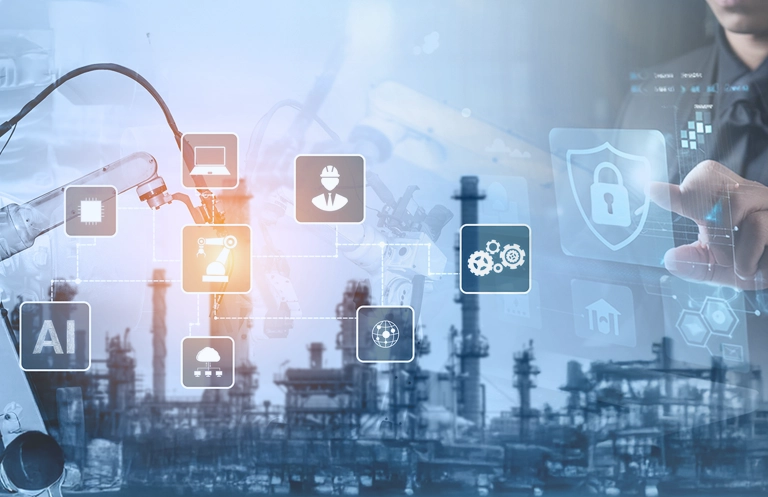The new edition of the IEA’s annual Global Electric Vehicle Outlook shows that more than 10 million electric cars were sold worldwide in 2022, and sales are expected to grow by another 35% this year to reach 14 million. The adoption of electric cars and the expansion of renewable energy have added to the challenges of grid management. When it comes to electric cars, demand response systems can play a role in managing the charging of EVs to minimize the impact on the grid during peak demand periods.
The IEA estimates that by 2040, almost 1 billion households and 11 billion appliances could participate in demand response programs. This article explains demand response and how it affects EV charging.
Introduction: Demand Response
Demand response refers to a strategy used by utility companies to manage and balance electricity demand during peak periods. It involves incentivizing consumers to adjust their electricity usage in response to signals or price incentives provided by the utility. By shifting or reducing electricity consumption during peak demand periods, demand response programs help utilities avoid grid overload and the need to activate additional power plants.

How OpenAdr Will Take the Demand Response to the Next Level?
Automated Demand Response (ADR) is mostly used to accommodate the increased demand for energy efficiency. ADR is rapidly gaining popularity, and the OpenADR alliance is developing a global standard for automating demand response programs for utilities and businesses.
Automated demand response is an internet protocol used to communicate with equipment at end users’ facilities to automatically reduce demand (electrical load) during demand response events. Simply put, the server-side represents utilities, and the client side represents end device owners or operators. Examples of end devices could be:
- EV Chargers
- Water Heaters
- Thermostats
- Solar/Storage/Inverters
- Lighting Control Systems
- Building Management Systems
- Industrial Control Systems

OpenADR is all about communication between the utility and end devices.
The two key components of OpenADR are:
- Virtual Top Node (VTN): The server located on the load aggregator/utility side, responsible for scheduling events.
- Virtual End Node (VEN): The client on the device side, receiving communication from the VTN. VENs are configured to respond to the server with relevant information such as device participation details, opt-outs, reporting, and more.
The VTN notifies about upcoming load shifting requirements and market conditions, while the VEN communicates whether it will participate in each event and provides reporting.
How Will EV Charging Be Benefited?
Charging electric cars can strain the grid, but when managed properly, they can be beneficial through the use of OCPP.
OCPP is an IoT protocol that connects EV chargers and software backend systems through bilateral communication. Most public charging stations utilize this protocol for payment systems, user access, and charger monitoring.
To implement demand response, the charging point operator must utilize the smart charging module within the OCPP protocol. The OCPP smart charging module enables the central software backend to send charging commands (profiles) to the charging stations. This includes reducing charging during peak demand periods or increasing vehicle charging when there is a high supply of wind or solar power.
Here’s how demand response and EV Charging Strategy intersect
Smart Charging: Demand response can be implemented in EV charging infrastructure through smart charging systems. These systems allow utility companies to control the charging process of electric vehicles, either remotely or through communication with the vehicle. By coordinating charging patterns, utilities can optimize charging times to align with periods of lower electricity demand or higher renewable energy generation.
Time-of-Use Pricing: Time-of-use (TOU) pricing is a tariff structure where electricity rates vary based on the time of day. TOU pricing encourages EV owners to charge their vehicles during off-peak hours when electricity demand is lower. This helps to distribute the load on the grid more evenly throughout the day and reduces the need for additional power generation capacity during peak periods.
Vehicle-to-Grid (V2G) Technology: Vehicle-to-grid technology enables electric vehicles to discharge stored energy back into the grid when needed. In this scenario, electric vehicles act as mobile energy storage units that can supply electricity during peak demand periods. By participating in demand response programs, EV owners can sell surplus electricity from their vehicles to the grid, earning financial incentives in return.
Incentives and Rewards: Utility companies often provide incentives and rewards to EV owners who participate in demand response programs. These incentives can include reduced electricity rates, monetary rewards, or credits towards charging expenses. By engaging EV owners in demand response, utilities can encourage load shifting and promote more sustainable charging practices.
Integration with DERMS
DERMS are software platforms that enable the effective management and optimization of distributed energy resources, such as solar panels, battery storage systems, electric vehicles, and other decentralized energy assets.
DERMS platforms typically use standardized communication protocols (e.g., OpenADR) to interact with different devices and systems. DERMS can send signals to adjust charging rates, reschedule charging sessions, or temporarily pause charging during peak demand periods. Aggregators contract with utilities to manage programs through the DERMS platform.
By integrating OpenADR with DERMS, utilities and grid operators can effectively manage and optimize distributed energy resources during demand response events. This integration enables seamless communication, coordination, and control, leading to more efficient and reliable demand response programs while maximizing the value of distributed energy resources on the grid.
Conclusion
The EV industry already benefits from smart charging as a form of demand response, but pairing this with automated demand response is the future of energy sustainability. We can help enhance the overall effectiveness, efficiency, and flexibility of demand response by integrating with aggregators like MercuryEdge ,Autogrid, Virtual Peaker etc. We offer complete edge-to-cloud electrical vehicle charging solutions.
To know more, contact our experts today.
Reference Links:
https://www.eia.gov/todayinenergy/detail.php?id=54639
https://www.iea.org/news/demand-for-electric-cars-is-booming-with-sales-expected-to-leap-35-this-year-after-a-record-breaking-2022
Demand Response With Electric Vehicles and OCPP Backends (ampcontrol.io)













